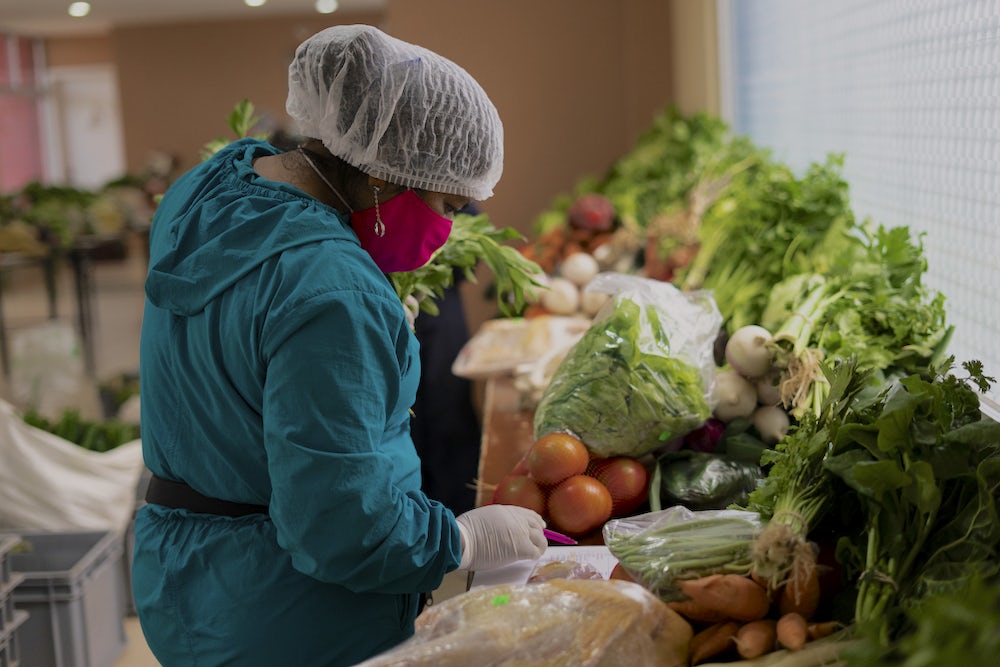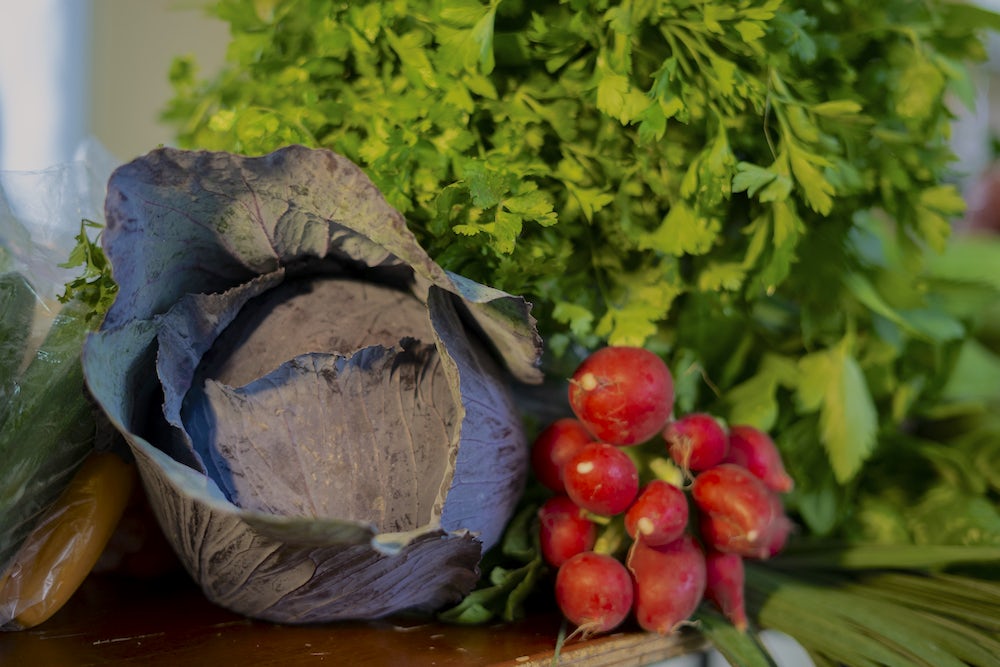Shortly after the COVID-19 pandemic reached Ecuador in March 2020, the government mandated a nationwide lockdown to curb the spread of the coronavirus. While done to protect the health and safety of the country’s citizens, the lockdown also curbed the ability of many to earn incomes and left many families scrambling for a way to feed themselves without leaving their homes.
In Quito, the nation’s capital, the mayor approached Heifer Ecuador, recognizing an opportunity to support both rural small-scale farmers and poor urban neighborhoods disproportionally affected by the pandemic. “He said, we know you work with producers, we need your help to support vulnerable populations. And we need to keep people at home,” said Rosa Rodriguez, director of Heifer Ecuador. Rodriguez’s team and the groups of farmers they work with quickly put their heads together to come up with a system that is affordable for nearly every family and safe for everyone through the Future of Food program.
“The joint work between the Municipality of Quito and Heifer Ecuador enabled more than 4,000 families to avoid leaving home to stock up on food and more than 200 producers to sell their crops during the most critical time of the pandemic,” said Andrés Estrella, the head of planning for Quito’s Department of Productive and Competitive Development.

Heifer Ecuador’s Future of Food program kicked off in 2019 to boost the production of nutritious, sustainably grown food and get it to eager urban customers. The ultimate goal is for thousands of small-scale farming families in Ecuador to close the living income gap. In Ecuador the living income, or the amount of money each person in a household needs per day to live a dignified life, is $5.26 in the highlands and $5.36 on the coast. But many farmers in Ecuador make less than $4.00 daily, meaning they often have to sacrifice nutritious food, clean water, shelter, health care, education or other essentials.
Of course, the novel coronavirus pandemic changed the trajectory of the program, which included connecting farmers to open-air marketplaces and fairs to sell their products. Working with Heifer International and the Municipality of Quito, farmers and others food workers created a whole new delivery system on the fly, putting out catalogs of their offerings, adopting stringent sanitation practices on farms and in production facilities, and partnering with an app developer so urban customers could use smartphones to easily order fresh produce directly from rural farms.

Recently, the Heifer Ecuador team discussed the collaboration with the Municipality of Quito’s Estrella.
Heifer Ecuador: What motivated the Municipality of Quito to work with Heifer Ecuador in the context of the COVID-19 pandemic?
Andrés Estrella: In these difficult times, the Municipality set out a mission: to guarantee the food supply for the people of Quito, without the need for them to leave home. To this end, we contacted several organizations — producer guilds, local institutions and NGOs — because we were also interested in producers being able to continue marketing their crops. We needed to act quickly, and it was Heifer Ecuador that gave us that response, because they were already implementing the Future of Food project. That framework provided the opportunity to work together in this initiative, the home delivery of agroecological baskets.
How was the joint work of the two organizations coordinated?
It was an interesting challenge, because from March 2020 when we started working until August, we never met in person. Everything was coordinated by telephone and virtually. We had to coordinate certain actions with other agencies of the Municipality, while Heifer Ecuador created, racing against the clock, a marketing and distribution network with farmers from Cotopaxi Province and neighborhood collectives in [Quito], responsible for receiving orders and delivering them door-to-door on bicycles. It wasn't an easy task, but we got good results.
What were the outcomes?
In total, during the pandemic months, in Quito, 4,215 baskets of agroecological products were marketed door-to-door. This meant that 4,215 families did not have to leave home to have supplies that would enable them to prepare their meals.
We had two collection centers operational for basket collection and distribution. Not only did we ensure that more than 4,000 families could stay home at the most critical time of the pandemic, but we also managed to [support] approximately 200 farming families in selling their produce, because marketing crops is their main source of income.In addition, we also achieved other encouraging results. One of them was holding mobile markets in the housing complexes of southern Quito.

What has been the specific contribution that the city has made to this initiative’s implementation and continuity?
Three fundamental things were arranged [by the government of Quito] to enable home-delivered agroecological baskets: Authorizing the use of collection centers, weekly disinfection of them to ensure the biosecurity of the entire chain, both from when vehicles arrived with products, and the center where the baskets were assembled for distribution. Subsequently the Municipality publicized [the program], so that people would know about [it] and could purchase baskets.
How is the work coordinated by these two institutions contributing to building a sustainable food system in Quito?
In 2019, in the capital, there was a proposal to create a sustainable food system, and Quito made an Agri-Food Pact. One of the key points of this plan is to ensure the food supply in the city, so we began to link the farmers nearest the city with the sales venues to establish short, direct marketing chains.
How is nutrition taken into account?
Of course, we know that agroecological [foods] are synonymous with health and nutrition because they are naturally grown products. However, the community in general does not know about all the benefits of consuming such products, including the nutritional benefits. The first task is to get people in Quito more involved with agroecological production so they will be the ones who recognize the nutritional contributions that these foods make.

How do you achieve that goal?
In addition to the information, communication or publicity campaigns for this type of production, the Municipality proposes structural changes, such as inclusion in the curriculum grid for municipal schools [to] teach agroecology and sustainability.
How will the work with Heifer Ecuador continue?
The most interesting thing about this project is that it managed and manages to evolve. Continuing to deliver agroecological baskets at a time when mobility in the city is no longer so [limited will be another challenge], but there is continuity with mobile markets in urban developments. We plan to open market areas in at least two housing complexes out of each of the nine Zonal Administrations that are in the Metropolitan District of Quito.
We plan to sign an agreement in March with the Heifer Ecuador. The objective is to structure the work arrangement so Heifer and the Municipality can make these initiatives feasible. We are already clear about the actions that we want to strengthen, so we are putting this in writing, validated by both parties, as the beginning of a larger project that we can undertake in the future.